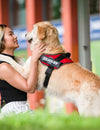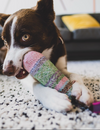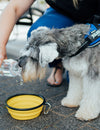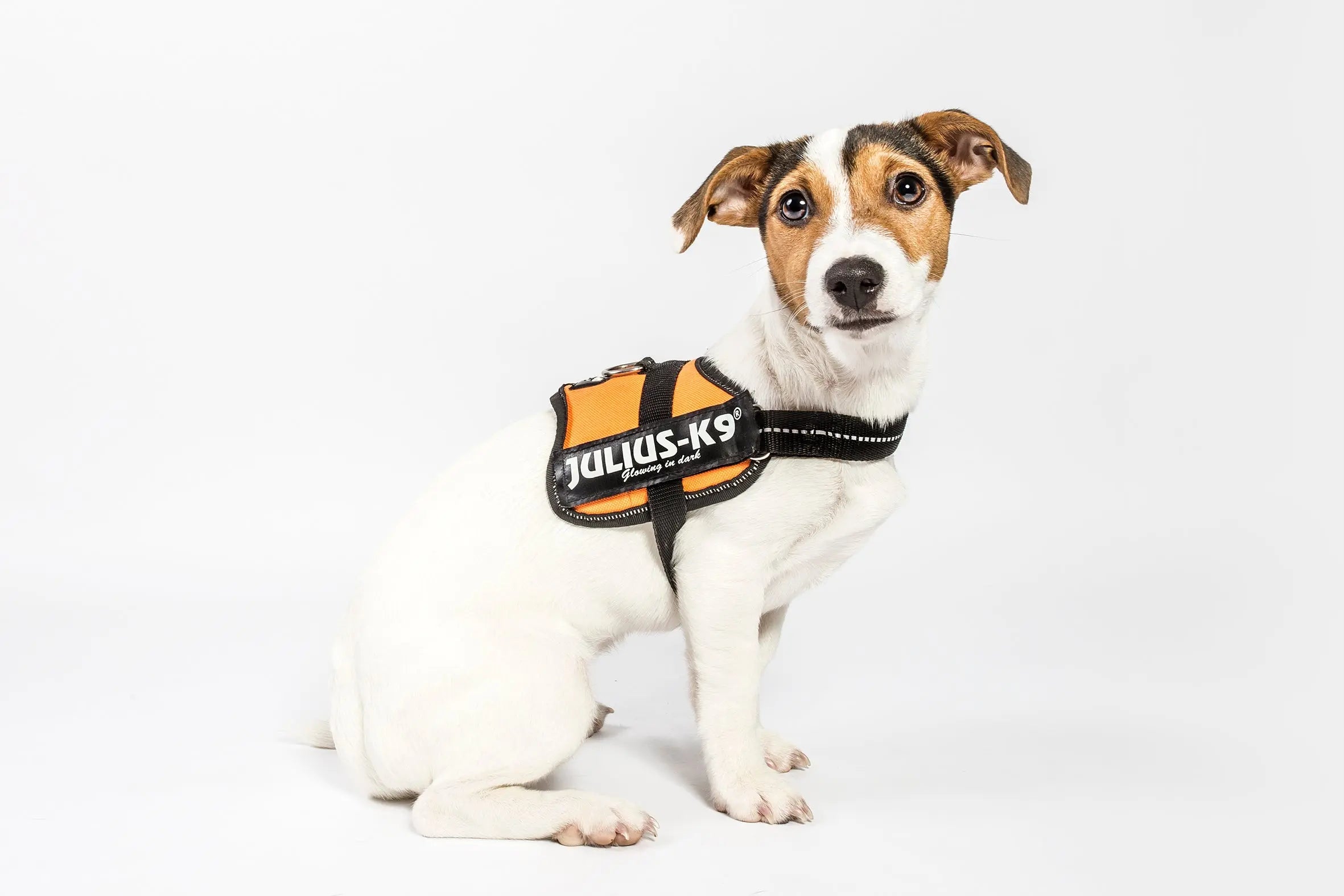
An incorrectly fitted harness can do a lot more harm than good, and getting it fitted properly will help keep your dog safe, comfortable, and under control.
Whatever harness you have bought, reputable manufacturers will include printed illustrations with guidelines instructing how best to successfully fit and adjust their harnesses. However, sometimes these instructions can confuse owners.
In this article we will hopefully make it clearer to what exactly you should and shouldn’t do when fitting a harness.
Dangers of an improper fitted harness
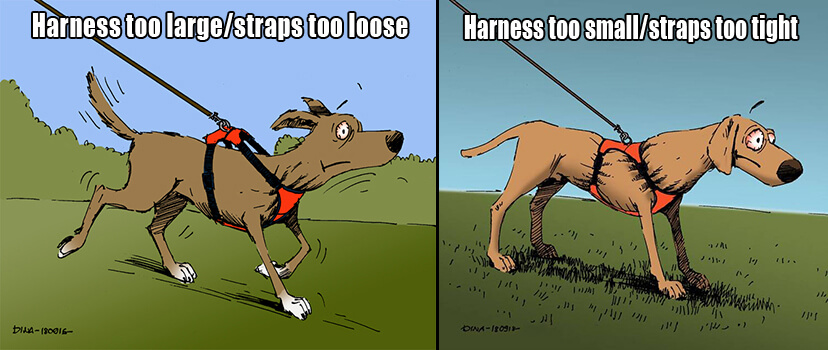
A well fitted harness is completely safe and offers comfort, ease of handling, and improved safety when out for walks. However, like any piece of safety equipment, an incorrect fit can be problematic.
An improperly sized or fitted harness can cause a wide range of health and safety issues for your dog:
Too Loose
- This can cause friction and rubbing and general discomfort.
- The chest strap can slip down around the dog’s legs allowing the dog to step out of the harness and escape.
- Pressure of leash pulling will not be evenly distributed around the torso as designed, causing too much force applied to the chest area.
- Risk of chest and neck injuries due to improper support being provided.
- Leash control will be reduced due to poor pressure distribution.
Too Tight
- Breathing can be impeded and can lead to gagging or choking when leash pressure is applied.
- General discomfort felt by the dog.
- Skin and fur irritation caused by friction which can develop into sores.
- It can impact ease walking or running.
Ensuring you have the correct harness size

When buying a new harness, taking accurate measurements of your dog is essential to get the right size.
If you already own a harness but are having problems fitting it or the dog seems uncomfortable, you should check you do actually have the right size harness. A common mistake is not buying a larger harness in time as the dog grows.
You should use both the girth measurement and the weight of the dog.
Girth
When measuring your dog’s girth, you need to use a fabric tape measure and wrap it over your dog's shoulders directly behind the front legs, and wrap it round (image below):
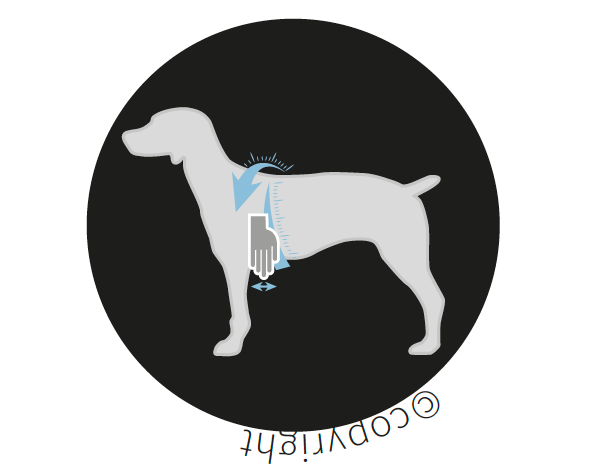
Weight
The simplest way to weigh your dog is to weigh yourself on bathroom scales, then hold your dog and weigh yourself and your dog, and then subtract your weight. This will give you an accurate weight of your dog.
Do you have the right harness?
If you no longer have the harnesses documentation that recommends compatible girth measurement and weight, the below table for our IDC Powerharnesses® is a good guide.
Please keep in mind that harnesses from different manufactures will have slightly different size standards.
Size Guide
| IDC® Powerharness Size | Chest Girth Measurement | Dog Weight |
|---|---|---|
| Baby 1 | 29 - 36 cm | 0.8 - 3 kg |
| Baby 2 | 33 - 45 cm | 2 - 5 kg |
| Mini-Mini | 40 - 53 cm | 4 - 7 kg |
| Mini | 49 - 67 cm | 7 - 15 kg |
| 0 | 58 - 76 cm | 14 - 25 kg |
| 1 | 63 - 85 cm | 23 - 30 kg |
| 2 | 71 - 96 cm | 28 - 40 kg |
| 3 | 82 - 115 cm | 40 - 70 kg |
| 4 | 96 - 138 cm | 70 - 90 kg |
Safety Note: Choosing a larger harness for a dog to grow into should be avoided.
This can cause the same safety issues raised above as the designed pressure points for dog lead pulling will be misaligned and the chest strap can slip down over the dog’s front legs, allowing the dog to escape.
Reasons why dogs escape from harnesses
Improper fitting is the main reason why dogs are sometimes able to escape from a harness.
A well fitting harness should be snug but not tight and should allow enough room for you to fit your fingers between the dog’s back and the harness (image below).
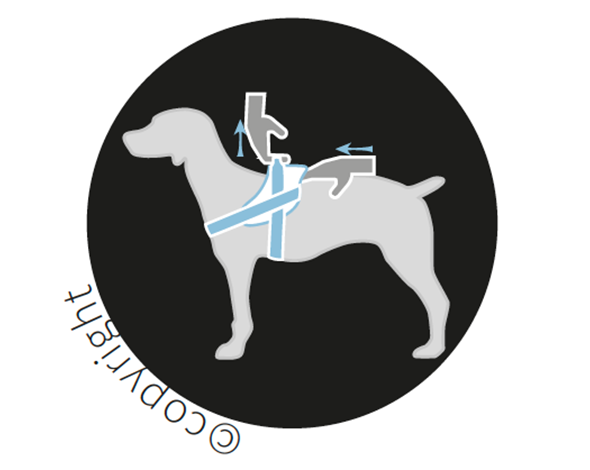
Get familiar with the harness
A good harness should be highly secure for the dog, but very easy for the owner to take off and adjust.
You should be confident in how your harness works and be able to tighten or loosen the it while it’s fitted on your dog.
It’s important to be completely familiar adjusting and using the harness when out for walks in case a dog gets snagged or runs into any difficulty and needs to be released quickly from the harness.
While at home take the time to become familiar with all of the harness features and get used to fitting, adjusting, and removing the harness so you can use it confidently and correctly.

